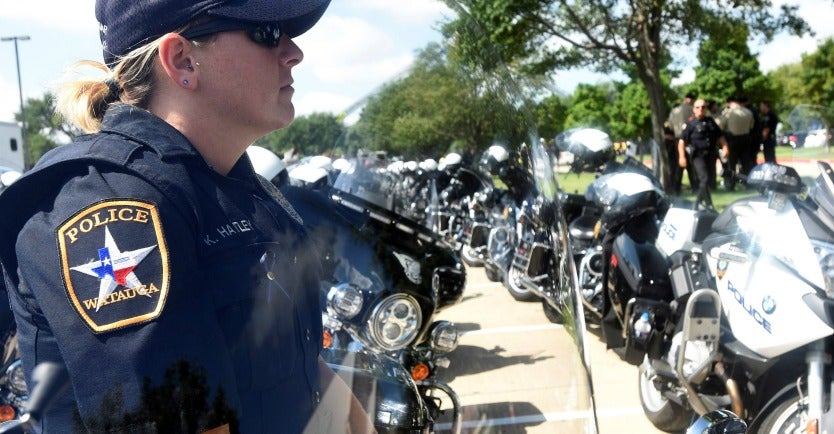Race relations in America, and in particular tensions between communities of color and domestic law enforcement, have seemingly reached a nadir not seen in decades. Tragic incidents, the facts of which are often misunderstood or exploited, have contributed to a growing sense of detachment by some within society.
Feelings of “us versus them” have calcified into outright hostility, anger, and resentment.
Sadly, some have disingenuously used recent events to promote a false narrative implicating the American law enforcement community, and often the entire criminal justice system, as systemically prejudiced and deserving of scorn.
The Daily Signal depends on the support of readers like you. Donate now
This drumbeat of criticism is often coupled with dangerous and inflammatory anti-police rhetoric that has made policing in America more dangerous and communities less safe.
Critics have suggested that much of the tension that shrouds police and community relations could be softened if only the police would better understand the unique experiences and worldview of those with whom they interact, particularly within communities of color.
This is absolutely true. Empathy is a vitally important element of effective policing. But to be truly effective, empathy must be shared and understood as a two-way street.
Less than a day after last week’s tragic, cold-blooded murder of 5 Dallas-area police officers in an unprecedented act of terror against the law enforcement community, former Secretary of State Hillary Clinton called upon police officers to put themselves “in the shoes of those African-American families who fear every time their children go somewhere, who have to have ‘The Talk,’ about, you now, how to really protect themselves [from police], when they’re the ones who should be expecting protection from encounters with police.”
Clinton was understandably encouraging empathy in the context of police and community interactions; however, in order to have a “real conversation” on policing in America there should be an acknowledgment that empathy must be shared if we are to expect tensions within police and community relations to ease.
Clinton encouraged the proverbial walk-a-mile-in-one’s-shoes introspection of the African-American experience, an absolutely appropriate suggestion.
But the public would have been better served if instead our nation’s leaders called for all Americans, and in particular those most critical of law enforcement, to put themselves in the shoes of the average beat cop patrolling an American city in the year 2016.
What does it feel like to approach a vehicle with one or more individuals in it when you have absolutely no clue if they’re armed or mean you harm? How might an officer’s attitude toward a person they first encounter be influenced by their past experiences with others in similar situations? Perhaps repeatedly dealing with the collective ills of society might make some officers more insular, guarded, or cautious.
Imagine what it is like to work among these conditions. Now stop for a moment and really imagine what it is like. It is easy to verbalize an understanding of the emotional and physical challenges of being a police officer, but it is much harder to actually put yourself in their shoes.
How many jobs require a person to legitimately wonder if they will make it home to their families at the end of their shift? How many jobs routinely expose a person to physical assault, disease, and the deprivations of society?
It may be easy to dismiss these considerations, to cynically suggest that they’re only meant to justify bad behavior and distract from other issues. But to do so belies a disingenuous and cavalier attitude toward the actual pursuit of an improvement in police and community relations.
Individual incidents should always be judged on their respective merits and conclusions should be drawn only following an objective analysis of all available facts and evidence.
Although that may take more time than many people are willing to commit prior to indulging their emotional response, we are far more likely to do so if we employ a sense of shared empathy toward all participants within a given situation.
The public is constantly being told that we need to have a “real conversation” on police and community relations.
But until that “real conversation” includes a willingness from all sides to acknowledge the legitimacy of each other’s respective concerns, we will continue to spin ourselves into a circle with those on each side of the ideological divide unsatisfied with the conclusions of the other.






























